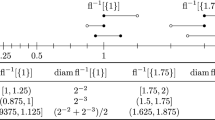Abstract
The effect of two important computer design parameters on floating point multiplication is studied. The parameters are the number of guard digits, and the decision whether the post-arithmetic normalization shift is done before or after rounding. Our results on the accurary of floating point multiplication depend on a stochastic model for computer numbers. There is an interesting interplay between guard digit possibilities and the normalization option. For example, our own first impression was that normalization before rounding would always be preferable to normalization after rounding. Our results show that this is not the case when there is only one guard digit. In a related vein, our results also give comprehensive justification of the following observation: On an even base machine whose architecture provides for normalization before rounding, one should not merely ask for symmetric rounding (rather than rounding by chopping). Instead one should ask for symmetric roundingplus two guard digits.
Zusammenfassung
Es wird der Einfluß von zwei technischen Kenngrößen einer Rechenanlage auf die Gleitkommamultiplikation untersucht. Die Kenngrößen sind die Anzahl der Schutzstellen und die Ausführung der Normalisierung vor bzw. nach der Rundung. Unsere Ergebnisse über die Genauigkeit der Gleitkommamultiplikation beruhen auf einem stochastischen Modell für Maschinenzahlen. Es gibt einen interessanten Zusammenhang zwischen der Anzahl der Schutzstellen und dem Zeitpunkt der Normalisierung. Zum Beispiel war unser erster Eindruck, daß Normalisierung vor der Rundung der Normalisierung nach der Rundung immer vorzuziehen sei. In der Arbeit wird gezeigt, daß dies für Maschinen mit nur einer Schutzstelle nicht gilt. Auch erhalten wir eine vollständige Erklärung für folgende Beobachtung: Auf einer Maschine mit gerader Basis und Normalisierung vor der Rundung sollte man nicht nur symmetrische Rundung verlangen (im Gegensatz zur Rundung durch Abschneiden), sondern sogar symmetrische Rundungund zwei Schutzstellen.
Similar content being viewed by others
Explore related subjects
Discover the latest articles, news and stories from top researchers in related subjects.References
Cody, W. J.: Static and Dynamic Numerical Characteristics of Floating-Point Arithmetic. IEEE Transactions on Computers, Vol. C-22, 598–601 (1973).
Feldstein, A., Goodman, R.: Convergence Estimates for the Distribution of Trailing Digits. Journal ACM23, 287–297 (1976).
Feller, W.: An Introduction to Probability Theory and Its Applications, Vol. 1, 3rd ed. New York: J. Wiley 1967.
Goodman, R., Feldstein, A.: Round-Off Error in Products. Computing15, 263–273 (1975).
Henrici, P.: Discrete Variable Methods in Ordinary Differential Equations. New York: J. Wiley 1962.
Kahan, W.: Further Remarks on Reducing Truncation Errors. Comm. ACM8, 40 (1965).
Kaneko, T., Liu, B.: On Local Roundoff Errors in Floating-Point Arithmetic. Journal ACM20, 391–398 (1973).
Knuth, D. E.: The Art of Computer Programming, Vol. 2/Seminumerical Algorithms. Reading, Mass.: Addison-Wesley 1969.
Kuki, H., Cody, W. J.: A Statistical Study of the Accuracy of Floating Point Number Systems. Comm. ACM16, 223–230 (1973).
Sterbenz, P. H.: Floating Point Computation. Englewood Cliffs, N. J.: Prentice-Hall 1974.
Tsao, N.: On the Distributions of Significant Digits and Roundoff Errors. Comm. ACM17, 269–271 (1974).
Author information
Authors and Affiliations
Additional information
The second author was supported in part during 1975 by an Arizona State University Summer Faculty Research Grant.
Rights and permissions
About this article
Cite this article
Goodman, R., Feldstein, A. Effect of guard digits and normalization options on floating point multiplication. Computing 18, 93–106 (1977). https://doi.org/10.1007/BF02243619
Received:
Revised:
Issue Date:
DOI: https://doi.org/10.1007/BF02243619




